- Insulation
- Posted
Power to the people
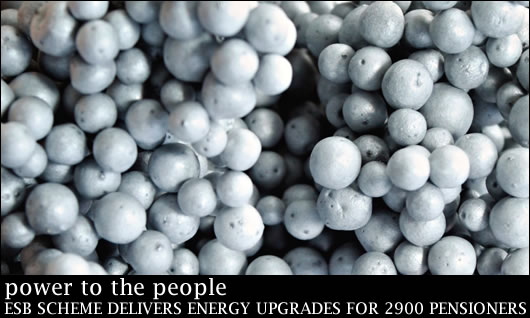
The ESB's Home Insulation Scheme aimed to upgrade the homes of 1,000 pensioners on fuel allowance last year - it ended up reaching almost three times that number, reducing carbon emissions and improving the lives of many. Lenny Antonelli found out more.
"It was like getting a birthday present," Marie Redmond says of finding out the ESB were to upgrade her bungalow in Borris, Co Carlow free of charge last year. The house was renovated under the company's Home Insulation Scheme, which provides free energy upgrades to pensioners receiving fuel allowance. As it happens, she found out she'd been approved the day after her 86th birthday.
Developed in response to the government's pledge to reduce Ireland's energy demand by 20 per cent by 2020, the scheme aimed to fill gaps left by SEI's Warmer Homes Scheme, which targets low income households and is run by community organisations nationwide. Because there aren't groups to administer the SEI scheme in every county, some geographical gaps were left – the ESB aimed to plug some of these.
Twelve thousand application forms were sent to eligible pensioners through the Department of Social Welfare – more than one in four was returned. The original plan was to target 1,000 homes, but the scheme was such a success that by Christmas 2,900 had been upgraded across Carlow, Kilkenny, Laois, Offaly and Galway. "We had a very feel good factor about the whole thing," says the ESB's Joe O'Donnell.
Houses were first given an energy assessment, and upgrade work focused on basic energy improvements. Contractors installed 200mm of Rockwool or fibreglass in attics or topped existing insulation up to 200mm, again using Rockwool or fibreglass. They also pump-filled any wall cavities with fibreglass or polystyrene bead, insulated water pipes and cylinders and draught-proofed windows and doors. Homeowners were given free low energy CFL lightbulbs too.
Energy efficiency experts Eaga helped to manage the scheme, working closely with contractors on the first 75 houses and performing spot checks on 20 per cent of jobs after that. The company performs a similar role for the Warmer Homes Scheme. Among Eaga's tasks were insuring insulation was correctly installed, that houses were left properly ventilated and that the ESB's health and safety standards were adhered to. They also checked that products were installed as per manufacturers' specifications. "Inspections are key," says Eaga's Fergus McCann. "It's human nature – if you're not inspected on a regular basis standards will drop."
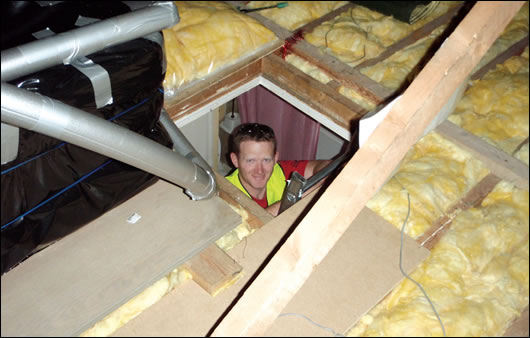
A contractor installing fibreglass insulation
Few problems arose with workmanship during the scheme. One of Eaga's key tasks was helping contractors with the vagaries of old buildings. "No matter how many houses the guys go into, they can come across something they haven't seen before," McCann says.
He believes giving contractors positive feedback is crucial to motivating them to keep standards high, and that explaining the benefits of energy upgrades makes them likely to do a better job. "You have to earn the guy's respect who's doing the work," he says, "then they'll take on board what you say."
Most of the contractors involved were used to working on new build projects during the property boom – McCann says educating those who'd previously worked on new build is key to making energy upgrade schemes work. Respecting people's homes and minimising disruption is another priority. "The work is only 80 per cent and customer service is the extra 20 per cent," he says.
The ESB will roll out a scaled down version of the programme in 2010, aiming to upgrade about half as many houses as last year. But the company has other retrofit schemes up its sleeve, and the government is likely to spur energy utilities into introducing similar programmes as it seeks to pass legislation requiring them to reduce energy demand. The Home Insulation Scheme provides an important grounding for the work ahead. "We've learned huge lessons in relation to the scale of what has to be done, in relation to the type of products that are available and required, and the standard of material and the standard of fitting that can be achieved," Joe O'Donnell says.
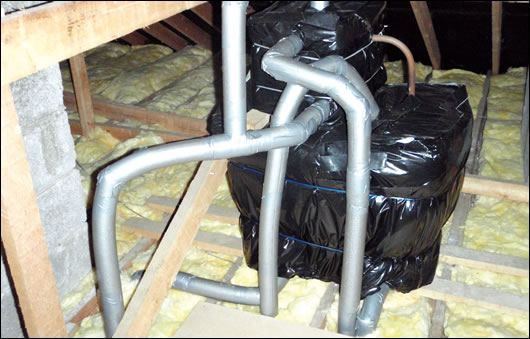
With the insulation reducing heat loss into attics, water tanks and pipes were insulated and neatly sealed to prevent freezing
The scheme is run by ESB Energy Services, and the unit also runs Halo, a free home energy assessment service. "What we're looking at is trying to develop a position where we're at the forefront of large scale energy conservation and energy efficiency," O'Donnell says.
While we're used to the likes of ESB and Bord Gais just providing our energy, the international norm of utilities offering services that reduce household energy use will become a lot more common in the coming years. Eaga's Nicola Lue is pleased to see Irish utilites starting to offer similar energy services to their coutnerparts in the UK. "You're getting at that housing stock that's most energy inefficient," she says. "In a lot of cases the houses didn't have any insulation."
The Home Insulation Scheme's aims included improving energy efficiency, reducing carbon emissions and supporting jobs (the scheme employed about 50 people directly). Another was to prevent fuel poverty – the inability to afford enough fuel for health and comfort – which is believed to effect more than one in ten Irish households.
It's clear from speaking to Joe O'Donnell that he's delighted to have been involved with a scheme that made tangible improvements to pensioners' quality of life. "It's one of the nicest things I've been involved in," he says. "The benefit to people was tangible straight away."
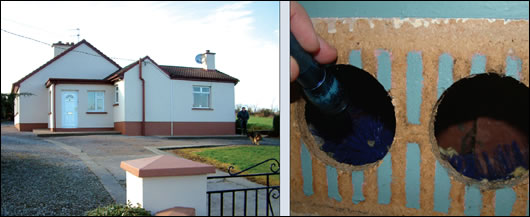
(left) Usher Insulation pumped the cavities of this house in Pullagh, Co Offaly and sealed the holes to leave no trace of the work; (right); a cavity brush used to ensure that the vent hasn't been blocked with insulation.
Marie Redmond was one of the 2,900 who benefited. "It's so nice and cosy in the house now, you wouldn't use half the oil," she says, quite a statement considering the freezing conditions this winter. Her house is becoming somewhat of flagship for the scheme, having featured on Duncan Stewart's green building show About The House on RTE1. But Marie's happy to keep flying the flag. "The job was only great," she says. "It's only terrific."
Selected project details
Project manager: ESB Energy Services
Consultants: Eaga , RPS
Selected contractors: Gilmartin Group , Usher Insulations, Dan Kelly & Sons
- Articles
- Sustainable Building Technology
- Power to the people
- emissions
- Halo
- esb
- Home Insulation Scheme
- Rockwool
- Eaga
Related items
-
 Much ado about nothing
Much ado about nothing -
 Decarbonising buildings “most important issue” – Climate Change Committee
Decarbonising buildings “most important issue” – Climate Change Committee -
 Techrete aims for net zero carbon by 2030
Techrete aims for net zero carbon by 2030 -
 Campaign launched to tackle whole-life environmental impact of buildings
Campaign launched to tackle whole-life environmental impact of buildings -
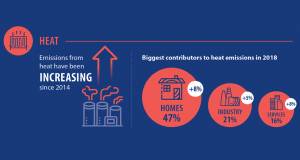 Heating emissions increase as Ireland falls short on decarbonisation
Heating emissions increase as Ireland falls short on decarbonisation -
 Draft new Part L energy efficiency regulations “disappointing”, critics say
Draft new Part L energy efficiency regulations “disappointing”, critics say -
 New research finds air pollution particles in human placentas
New research finds air pollution particles in human placentas -
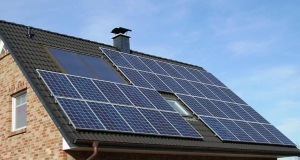 Policy for zero, or zero policy?
Policy for zero, or zero policy? -
 Major office scheme passes DLR’s passive house or equivalent policy
Major office scheme passes DLR’s passive house or equivalent policy -
 UN advocates passive house in latest carbon emissions report
UN advocates passive house in latest carbon emissions report -
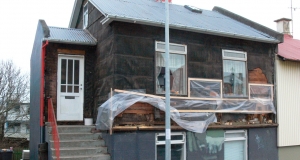 Who needs retrofit standards?
Who needs retrofit standards? -
 It’s in Ireland’s interest to tackle climate change — EPA director general
It’s in Ireland’s interest to tackle climate change — EPA director general

